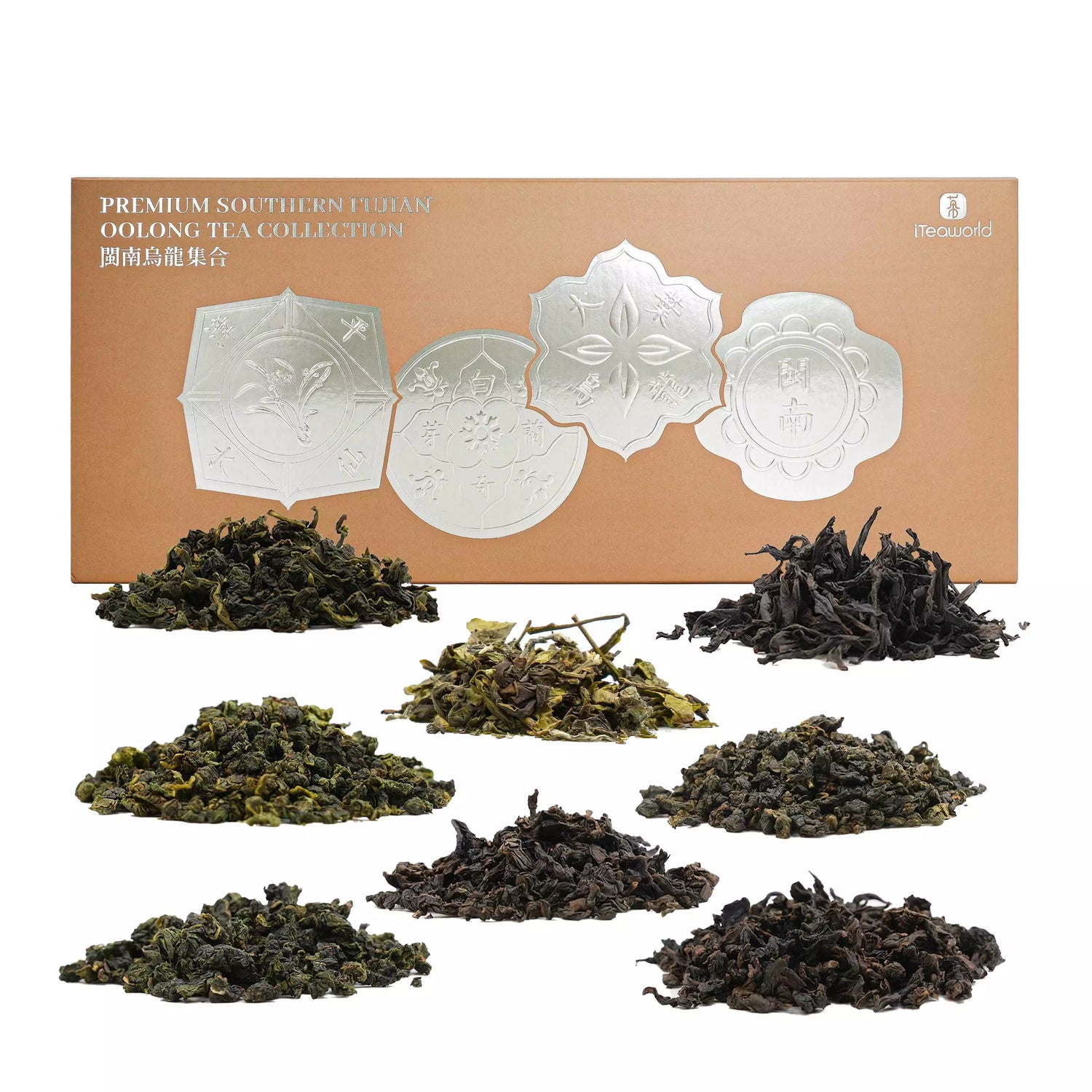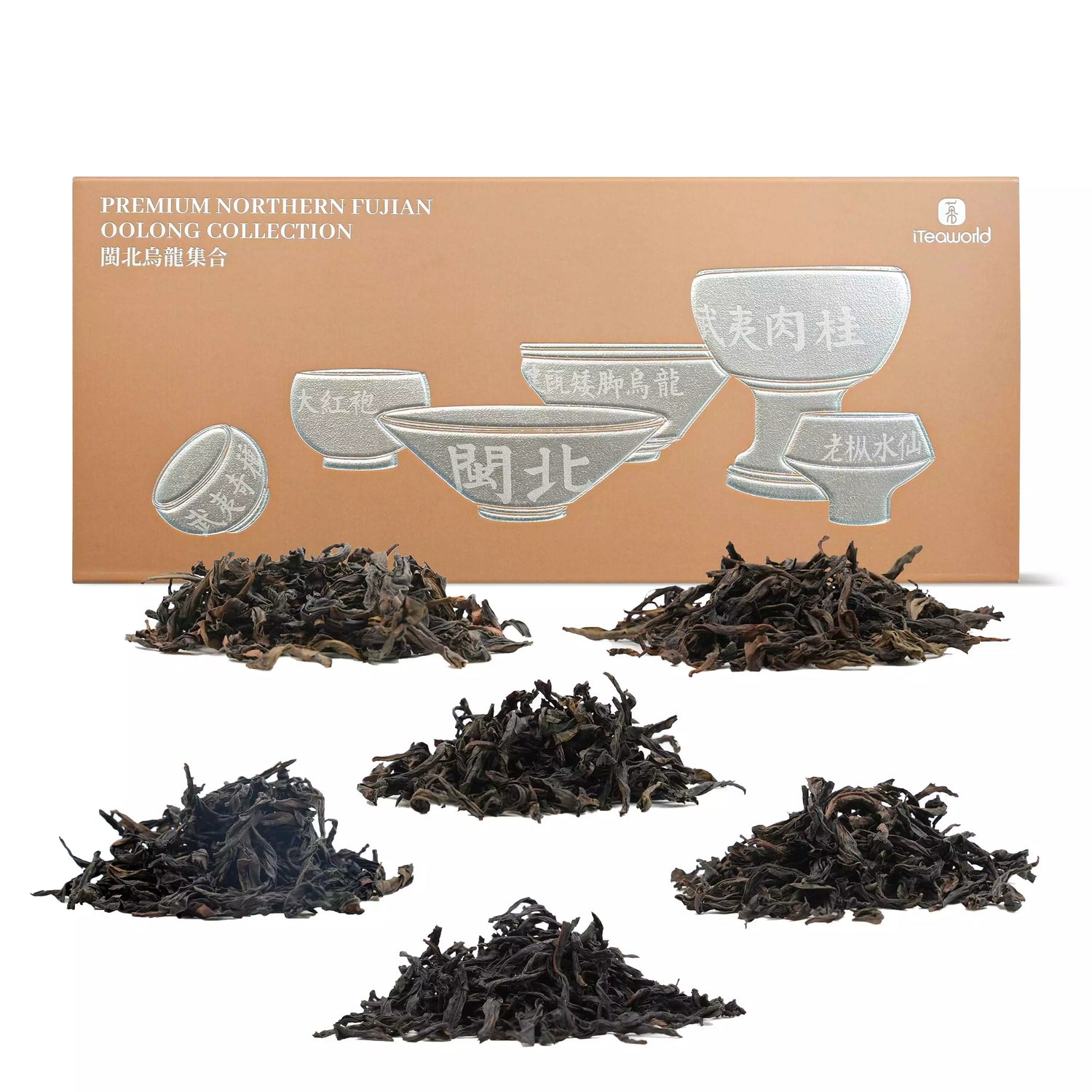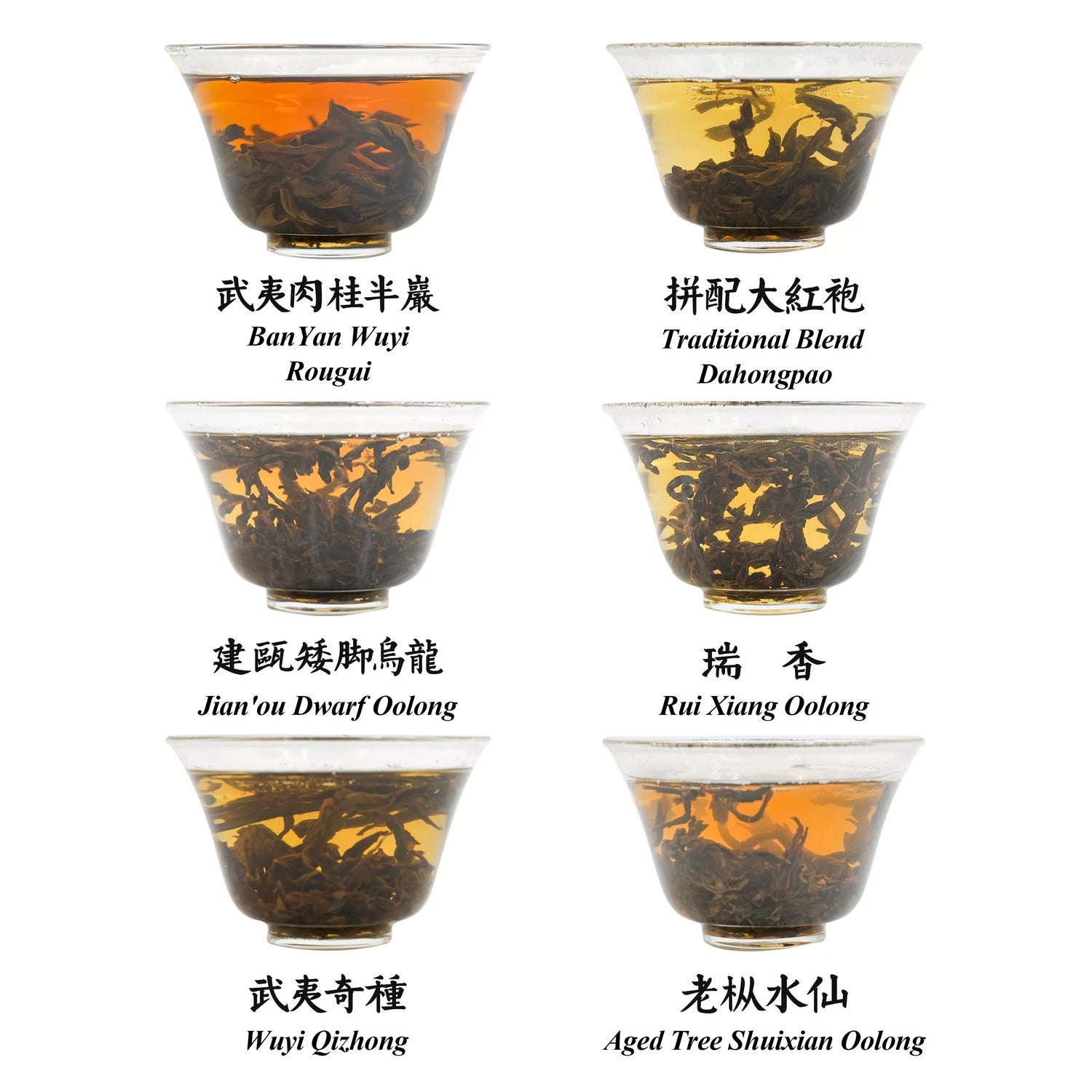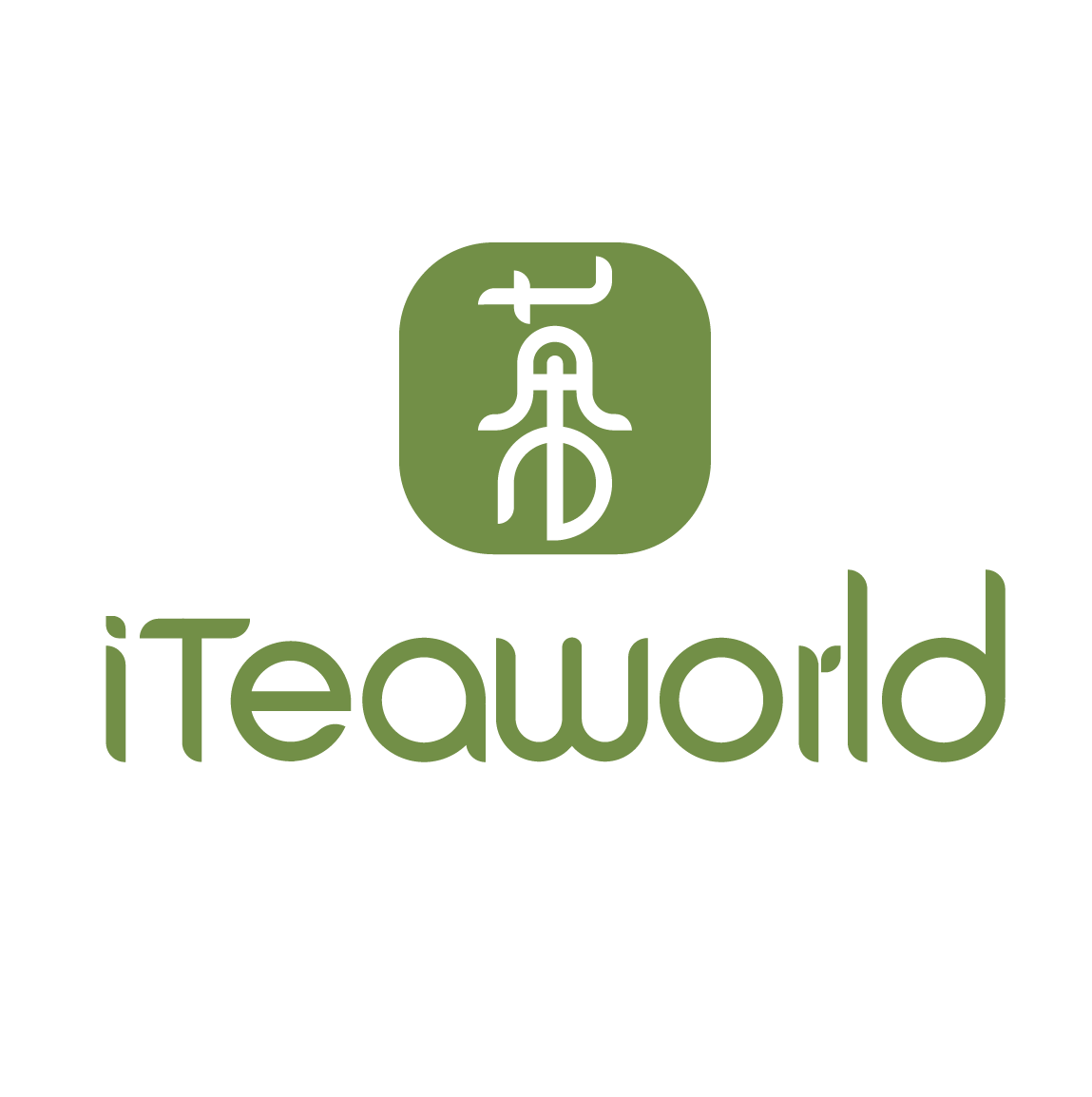3 продуктов
3 продуктов
Сортировать по:


Southern Fujian Oolong Collection--8 unique historical flavors 100g
$29.99
Цена за единицу товара заSouthern Fujian Oolong Collection--8 unique historical flavors 100g
$29.99
Цена за единицу товара заThe production of Oolong tea in the Southern Fujian region dates back to the 17th century, with a wide variety of Oolong teas. Among them, the famous Tie Guan Yin and Zhangping Shui Xian have been officially recognized as part of China’s Intangible Cultural Heritage.
This curated collection showcases oolong varieties discovered and cultivated in Southern Fujian, offering a glimpse into its evolving tea history and distinct flavor profiles. Whether you’re a seasoned tea drinker or a curious explorer, this selection lets you experience the true essence of Southern Fujian oolong.
The selection includes:
Qingxiang Tieguanyin (Light Aroma Tieguanyin)* 3 bags* 5 g
Nongxiang Tieguanyin (Strong Aroma Tieguanyin) * 3 bags* 5 g
Qingxiang Huangjingui (Light Aroma Huangjingui)* 3 bags* 5 g
Zhangping Shuixian (Pressed Shuixian from Zhangping)* 3 bags* 5 g
Yongchun Fo Shou (Yongchun Buddha’s Hand, Fruity Aroma)* 2 bags* 5 g
Qingxiang Baiya Qilan (Light Aroma Baiya Qilan)* 2 bags* 5 g
Nongxiang Meizhan (Strong Aroma Meizhan)* 2 bags* 5 g
Qingxiang Daye Oolong (Light Aroma Big Leaf Oolong)* 2 bags* 5 g
Processing Time: May 2024
Best Before Date: 36 months
Southern Fujian (Minnan)Oolong Tea: A Flavor for Every Era
1. Origins (Kangxi Period, Qing Dynasty)
Anxi is the birthplace of Minnan Oolong tea. During the Qing Dynasty's Kangxi period, a Yongchun monk grafted Anxi tea plants with native citron trees, creating the unique Yongchun Fo Shou tea, known for its distinctive fruity aroma and mineral depth.
2. Golden Age (from Qianlong to Xianfeng Periods, Qing Dynasty)
In the 18th century, Minnan Oolong entered its golden age. Wang Shiran from Anxi discovered a rare tea tree and made tea from it, which was presented to Emperor Qianlong. The tea was named Tie Guan Yin, due to its "iron-like weight" and "Guanyin-like shape." With its bold flavor and growing demand in Southeast Asia, it became a major export tea.
In the Xianfeng period, Anxi tea farmers selected and cultivated the Huang Jin Gui. Known for its osmanthus-like fragrance, it became a symbol of Minnan’s high-aroma Oolong teas.
3. Transformation (Late 19th to Early 20th Century)
To meet the needs of overseas markets, Minnan tea farmers developed Mei Zhan and Da Ye Oolong. Meanwhile, Zhangping Shui Xian evolved its unique "square tea cake" shape, becoming the only compressed Oolong tea.
Mei Zhan: Noted for fruity sweetness and strong infusions
Da Ye Oolong: Known for its thick texture and caramel notes, great for blending
Zhangping Shui Xian: Complex fragrance with intertwined orchid and osmanthus notes, smooth and refreshing taste.
4. Innovation (Beginning of the 20th century)
As technology advanced, Minnan Oolong entered a new era. In the 1980s, Pinghe County discovered Bai Ya Qi Lan, celebrated for its crisp orchid aroma.
Unique Crafting Characteristics:
- The fermentation level is typically between 10% and 25%, making it a lightly fermented Oolong tea.
- The repeated rolling and wrapping for the Shaping process is a key feature that distinguishes Minnan Oolong from other Oolong teas, shaping its unique appearance.
- Multiple rounds of slow roasting at low heat are used to enhance the tea's aroma.
- The leaves undergo multiple cycles of shaking and resting to achieve the perfect balance of "three reds and seven greens" in the leaf base.
How to Brew Minnan Oolong?
1. Choose the Right Teaware
White porcelain gaiwan – Best for lightly oxidized, lightly roasted oolongs, as it preserves delicate floral notes.
Yixing clay teapot – Ideal for richer, heavily roasted or charcoal-roasted oolongs, enhancing depth and smoothness.
2. Water Temperature Matters
Use boiling water (100°C / 212°F) for full aroma and body.
Water below 90°C (194°F) results in weaker flavor and muted fragrance.
3. Tea-to-Water Ratio
7–8g of tea for a 110ml gaiwan (about ⅓ full).
Standard ratio: 1:15 (tea to water)—adjust based on preference.
4. Use the Right Water
Soft, slightly alkaline spring water or purified water is best.
Avoid tap water with high mineral content, as it can mute the tea’s natural flavors.
5. Preheat Your Teaware
Rinse the gaiwan and cups with boiling water before brewing.
This warms the vessels and prevents temperature shock, allowing the aroma to bloom fully.
6. Wake Up the Tea (Rinse Infusion)
Pour boiling water over the leaves and immediately discard (within 10 seconds).
This removes any impurities and "wakes up" the leaves for optimal flavor release.
7. Proper Pouring Technique
Pour water gently along the inner wall of the gaiwan.
This helps the leaves unfurl evenly and enhances the fragrance.
8. First Infusion Timing
7–15 seconds for the first steep:
Lightly roasted teas need a shorter steep.
Heavily roasted teas can steep slightly longer.
9. Subsequent Infusions
Increase steep time by 5–10 seconds per infusion.
High-quality oolong can last 7–10 brews, with longer-lasting flavor in premium-grade teas.
10. Drain Completely Between Steeps
Always pour out all the liquid after each infusion.
This prevents oversteeping, which can lead to bitterness or astringency in later brews.


Northern Fujian Oolong Collection--6 representative flavors 100g
$39.99
Цена за единицу товара заNorthern Fujian Oolong Collection--6 representative flavors 100g
$39.99
Цена за единицу товара заThe Northern Fujian region is considered the birthplace of Oolong tea, and the traditional crafting methods of Wuyi Rock Tea have been recognized as part of China’s intangible cultural heritage. This collection brings together iconic oolong varieties from the Song Dynasty (Wuyi Qizhong and Jian'ou Dwarf Oolong) to today (Blended Da Hong Pao, Wuyi Rougui, Aged Tree Shuixian Oolong ), along with emerging cultivars with great future potential (Rui Xiang Oolong). Each tea carries the unique craftsmanship of the region, with its own distinct story and flavor. We hope this collection will allow you to explore the diverse flavors and rich cultural heritage of Northern Fujian (Minnan) Oolong tea.
Product Contains:
Wuyi Qizhong*3 bags* 5g
Jian'ou Dwarf Oolong*3 bags* 5g
Blended Da Hong Pao*4 bags* 5g
Wuyi Rougui *4 bags* 5g
Aged Tree Shuixian Oolong*3 bags* 5g
Rui Xiang Oolong*3 bags* 5g
Processing Time: November 2024
Best Before Date: 36 months
Minnan North Oolong Tea: A Cup, A History, A Story
1. Origins (Tang and Song Dynasties)
- The people used Wuyi Caicha (Qi zhong ) to produce Beiyuan tribute tea (a type of steamed green tea). During transportation, the leaves collided, causing some to turn red and undergo partial oxidation, developing semi-fermented characteristics, which are considered the origins of Oolong tea.
2. Birth (Ming Dynasty)
- After Emperor Zhu Yuanzhang banned compressed tea cakes, the tea farmers of Wuyi Mountain combined green and black tea processing techniques to create semi-fermented Oolong tea.
3. Development (Qing Dynasty)
- Wuyi Cai Tea (Qi Zhong): By the Qing Dynasty, Wuyi Rock Tea had established the basic processes of sun-drying, shaking, and roasting. The Wuyi Rock Tea system had matured, with the earliest representative varieties being Wuyi Cai Tea (Qi Zhong) and its derivative four famous cultivars (Da Hong Pao, Bai Ji Guan, Tie Luo Han, Shui Jin Gui).
- Jian'ou Dwarf Oolong: Originally from the Dongfeng Town of Jian'ou, the Dwarf Oolong (also known as Xiao Ye Oolong) was introduced to Wuyi Mountain, where it was improved through craftsmanship, including charcoal roasting, imparting it with signature peachy aroma and strong mineral finish made it a favorite for blending, earning the nickname “Prime Minister of Tea”.
- Wuyi Rougui: Rou Gui, another celebrated rock tea, dates back to the Qing dynasty. It was once rare and scattered in the rocky core of Wuyi, but it expanded in the 1960s through cutting and propagation.
- Wuyi Shui Xian: Shui Xian, introduced from Jianyang in the 1800s, became a Fujian classic thanks to its rich, woody flavor and thick body.
4. Prosperity (20th Century to Present)
- Blended Da Hong Pao: In the 20th century, breakthroughs in asexual reproduction techniques allowed the successful propagation of Da Hong Pao by cutting in 1982, leading to the mass production of pure Da Hong Pao after the mother tree ceased harvesting in 2006.
- Rui Xiang: New hybrid varieties such as Jin Mudan, Huang Guanyin, and Rui Xiang were developed by crossbreeding traditional types like Rou Gui, Shui Xian, and Huang Jin Gui. Rui Xiang, in particular, is known for its ever-changing aroma—from frankincense and gardenia to osmanthus, peach, and honey—earning it the nickname “The Shape-Shifter” of rock teas.
Unique Crafting Characteristics:
1. Heavy Fermentation & Oxidation
Northern Fujian oolong follows a unique processing style: longer withering under sunlight, light but repeated shaking, multiple oxidation cycles, and deep fermentation. Compared to Southern Fujian oolongs (which are 10%-30% oxidized), Northern Fujian oolongs range from 25-55% oxidation, giving the tea a rich amber-gold color and a smoother, more full-bodied taste.
2. Charcoal Roasting Process
Charcoal roasting is a signature technique of Northern Fujian Oolong teas. It involves three key stages:
Initial Roast ("Water Walk"): High heat (~150°C) is used to quickly remove surface moisture and grassy notes.
Second Roast (Slow Roast): A gentle, extended roast lasting 10-18 hours, with the temperature gradually lowered to ~80°C. This stage develops rich caramel and mineral notes.
Final Roast (Aging Roast): A very low, slow roast at 60–80°C for 12-24 hours. This step reduces the leaf’s moisture to 3–5%, boosting shelf life and aging potential.
Only dense hardwood charcoal—like longan or lychee wood—is used to ensure a steady, even roast.
This traditional method produces a warm, rounded flavor with a deep roasted aroma, offering a smoother and more refined character than the sharper taste of electric-roasted teas.
3. Rolling & Shaping
No Ball-Rolling – Unlike Southern Fujian oolongs, Northern Fujian oolongs are not tightly rolled, preserving their long, twisted leaf shape with a glossy dark hue and reddish-brown highlights.
Double Frying & Rolling – The tea is fried and rolled twice, ensuring an even release of its inner essence and creating a thicker, silkier tea liquor.
Brewing Recommendations:
Teaware:
Gaiwan (110- 150ml): Best for aromatic teas (Rougui, Dangui).
Yixing Clay Teapot: Ideal for heavily roasted or aged teas.
Water:
Use 100°C (boiling) spring or purified water.
Tea-to-Water Ratio:
5g tea / 110ml water.
Brewing Tips:
Preheat & awaken tea.
High pour for aroma, low pour for smoothness.
Quick steeps (5-10s) for first 3 infusions, then extend.
Fully drain after each brew.

Guangdong Oolong Tea Collection: 6 Historical Flavors for Tea Lovers 100g
$49.99
Цена за единицу товара заGuangdong Oolong Tea Collection: 6 Historical Flavors for Tea Lovers 100g
$49.99
Цена за единицу товара заIn Guangdong, tea drinking has long been a part of daily life. With a rich history of tea cultivation, the region has developed a deep-rooted tea culture and a diverse range of Oolong teas with distinctive craftsmanship and flavors. This collection traces the footsteps of Guangdong Oolong through history, gathering the most iconic teas from ancient traditions to modern favorites. We hope this product allows you to experience the unique charm of Guangdong Oolong tea.
The product includes:
Fenghuang Lancai Oolong* 3 bags* 5 g
Shiguping Oolong* 3 bags* 5 g
Fenghuang Dancong Honey Orchid (Mi Lan Xiang)* 4 bags* 5 g
Ya Shi Xiang Dancong* 3 bags* 5 g
Lingtou Dancong* 4 bags* 5 g
Xiyan Oolong* 3 bags* 5 g
Processing Time: November 2024
Best Before Date: 36 months
What Makes Guangdong Oolong Tea So Special?
1. A Long and Rich History
Guangdong’s tea-making traditions date back as early as the Song Dynasty. By the late Ming and early Qing periods, Oolong tea processing techniques were introduced to Guangdong, marking the beginning of its unique Guangdong Oolong tea history.
- Initially, Fenghuang shuixian and Shiguping Oolong were respectively made from the mother plant of Guangdong Oolong Tea (Fenghuang shuixian group species) and the small-leaf shrub tea trees cultivated in the She ethnic village.
- In the early 20th century, premium cultivars like Mi Lan Xiang (Honey Orchid Aroma) and Ya Shi Xiang (Duck Shit Aroma) were selected from the Fenghuang Shui Xian group spcies.
- In 1962, Lingtou Dancong was created in Lingtou Village, Raoping Town, Chaozhou, using a natural mutation of the Fenghuang Shui Xian group species known for its pronounced honey fragrance.
- In the 1970s, Xiyan Oolong emerged in the Xiyan Mountain region of Meizhou, combining Lingtou Dancong and Qilan cultivars to create a tea known for its high-mountain aroma.
2. Unique Craftsmanship
- High-quality fresh leaves are handpicked from single tea trees and processed individually.
- The fixation step uses a high-temperature, rapid method to lock in the tea’s fresh aroma and active compounds.
- The shaking process emphasizes evenness and multiple rounds to enhance the transformation of aromatic substances.
- Extended light fermentation develops a fuller, more transparent floral fragrance.
- Roasting is typically done at medium levels or low levels, with adjustments based on the tea’s aroma type and cultivar. The goal is to preserve the fresh aroma while adding body to the tea liquor. Roasting is carried out gradually in stages, avoiding damage to the aroma from sudden high heat.
How to brew?
Teaware: 110ml Gaiwan or Yixing Clay Teapot
Preheat all teaware with boiling water to enhance aroma.
Water Temp: 212°F (100°C)
Tea-to-Water Ratio: 5g per session
Steeping Time: 1–3 infusions: 15 sec
Later infusions: Add 5–10 sec
Total brews: 7–10 times
Water Quality: Spring or mineral water preferred
Pouring Tips:
High pour to awaken the aroma
Fixed-point pour for even extraction
Quick pour-out to prevent bitterness
Fully drain each brew for the best taste





